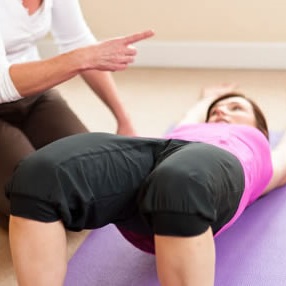 Figuring out how to start working out again after a long absence is a challenge most active people face at some point – be it post-injury, after a holiday break, or in this case, following a global health pandemic.
Figuring out how to start working out again after a long absence is a challenge most active people face at some point – be it post-injury, after a holiday break, or in this case, following a global health pandemic.
With nationwide gym closures and collective stress levels through the roof, you can be forgiven for falling off your regular training routine and inevitably, the post-lockdown gym environment is going to look and feel different, and your body will have likely changed too.
If you were impacted in any way by the pandemic, it’s perfectly normal to have lost some strength, endurance, and muscle mass.
So, if you find yourself worrying about how to start exercising again, the good news is that having a few months off doesn’t mean your hard-earned results are completely down the drain.
Usually taking 4 days off the gym leaves you sore and tired on that first session back, so easing ourselves back into the gym after missing more gym time might be a struggle. It’ll be made even worse for those of us who haven’t delved much into those home workouts this last lockdown.
We can still make this easy on ourselves though — there really is no need to worry at all. To help you get prepared, here’s some things you can do.
Start light:
It may be tempting to look at a barbell or machine and load it up with the same weight you used before the lockdowns. Going too heavy too soon leaves you frustrated at best and leads to injury at worst. Now is the time to embrace a beginner’s mindset and go back to basics.
Remember the first time you ever stepped foot in the gym? Did you lift as heavy as possible, or did you start light?
Shorter workouts:
Many gyms are reopening with finite timeslots for workouts to control foot traffic. This allows for stricter safety protocols and more thorough cleaning. So, if you were used to working out for 2–3 hours at a clip, it’s time to condense your efforts into shorter workouts. You don’t need to train for hours at a time to get results. Yes, rest periods between sets are important, especially if you’re lifting heavy weights. And long, steady workouts are great for improving cardiovascular health. However, with some careful planning you can get the results you want in less time. For example:
- Use compound exercises instead of single-joint movements to work multiple muscle groups.
- Superset opposing muscle groups to save time.
- Use a stopwatch or timer on your phone to track your rest periods.
- Do your cardio and stretching workouts at home and not at the gym.
Focus on what you couldn’t do at home:
Focus your workouts around exercises you couldn’t do at home, i.e. if you don’t have any weights at home then prioritise the weight room when at the gym.
Don’t give up on at home workouts:
Just because gyms are reopening doesn’t mean you have to give up at-home workouts. Whether you enjoy the convenience of staying home or you’re a little nervous about returning to a crowded gym, you can certainly combine gym workouts with your at-home routine. Consider going back to the gym for two workouts a week while continuing to train a few days at home.
We have the rare opportunity to start a new chapter in our fitness journey as gyms reopen. Rather than dwell on the progress you’ve lost, embrace the opportunity to approach fitness like a beginner again. A slow and steady approach helps you build consistency, avoid injury, and recapture the motivation that got you started in the first place.
